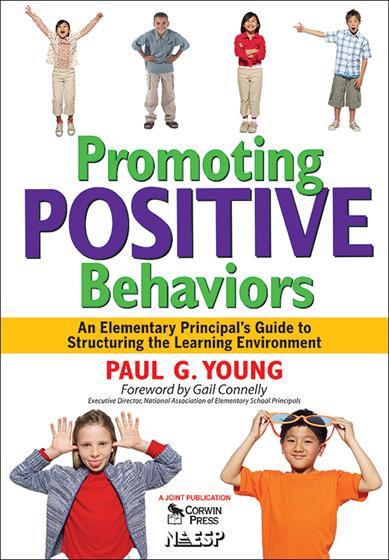Forward by Gail Connelly, Executive Director of NAESP
Acknowledgments
About the Author
Introduction
Purpose of This Book
Overview of the Contents
1. Beginnings: The Day and the Year
Introduction
Plan for Effective Morning Playground Supervision
Allow Recess in the Morning
Form a Safety Patrol
Teach Expectations to Students While Lining Up After the Bell Sounds
Build Relationships With Parents
Teach Children to Move Quietly Through the Hallways
Lock the Doors
Structure Homeroom Activities
Provide Universal Breakfast in the Classroom
Make Morning Accouncements
Check Bookbags and Homework Planners
Do the Shirts and the Pants Touch?
No Talking During Emergency Drills
Establish a Student Council
Establish Student Incentives and Recognitions
Empower Staff to Develop Schedules
Learn All Students' Names
Establish an Effective Intervention Assistance Process
Structure Effective Meetings
Check Mail and Messages at Least Three Times Daily
Establish the Schedule and Goals for the Day
Concluding Thoughts
Explanation of the Structural Analysis & Assessment Checklists
Checklist #1: Beginnings: Structural Analysis and Assessment
2. Early Focus on Learning and Instruction
Introduction
Escort Students to and From Special Classes
Establish Procedures for Restroom Breaks
Practice Entering and Leaving Assemblies
Develop a Substitute Handbook
Time on Task
Establish Inclusion Practices
Establish Procedures for Referring Students to the Office
Fully Utilize Volunteer Services
Teach a Code of Conduct
Common, Grade-Level Planning Increases Student Achievement
Concluding Thoughts
Checklist #2: Learning and Instruction: Structural Analysis and Assessment
3. Midpoints of the Day or Year
Introduction
Equip Yourself for Playground Supervision
Teach Manners and Hygiene
Facilitate Efficient Food Serving Lines
Schedule Recess First, Eat Afterwards
Speak With Inside Voices
Practice Forming Lines
Structure Playground Games
Monitor Students' Behavior and Eating Habits
Establish Procedures for Indoor Recess Supervision
Take Pictures and Use Recorders
Establish Contingency Plans for Crisis Supervision
Teach Children to Speak in Complete Sentences
Develop a Conflict Mediation Program
Concluding Thoughts
Checklist #3: Midpoints: Structural Analysis and Assessment
4. The Second Half of the Day or Year
Introduction
Reading Can Be Taught After Lunch
Create an "Adam Plan"
Supervise Student Suspensions
Write Notes and Return Phone Calls
Teach Multiple Intelligences
Show Evidence of Student Learning
Allow Children to Draw
Serve Fruit and Vegetable Afternoon Snacks
Don't Get Tired and Let Down Your Guard
Give Attention to Customer Service
Eliminate Loitering in the Hallways and Office
Utilize Homework Planners
Communicate With Parents
Concluding Thoughts
Checklist #4: The Second Half: Structural Analysis and Assessment
5. Endings: Dismissal and Wrap-up of the Year
Introduction
Monitor Bus Pickup and Drop-Off Locations
Ride School Buses
Delineate Walking Students From Parent Pickups, Bus Riders, and Others
Walk Students Home
Share Positives With Parents
How Effective are Detentions?
Eliminate Clutter Throughout the Campus
Establish Curb Appeal
Eliminate Gum
Prepare the Classroom for Custodian Cleaning
Establish Procedures for Determining Student Classroom Placements
Reflect and Take Action on Important Issues
Be a Master Motivator
Coordinate Learning Opportunities With the Afterschool Program
Concluding Thoughts
Checklist #5: Endings Dismissal and Wrap-up of the Year: Structural Analysis and Assessment
Summary Comments
Recommended Readings
Index






